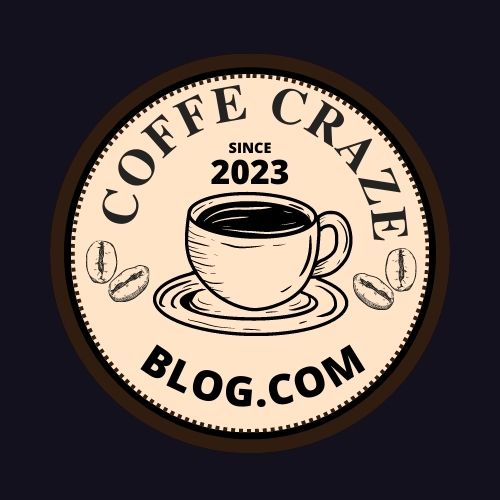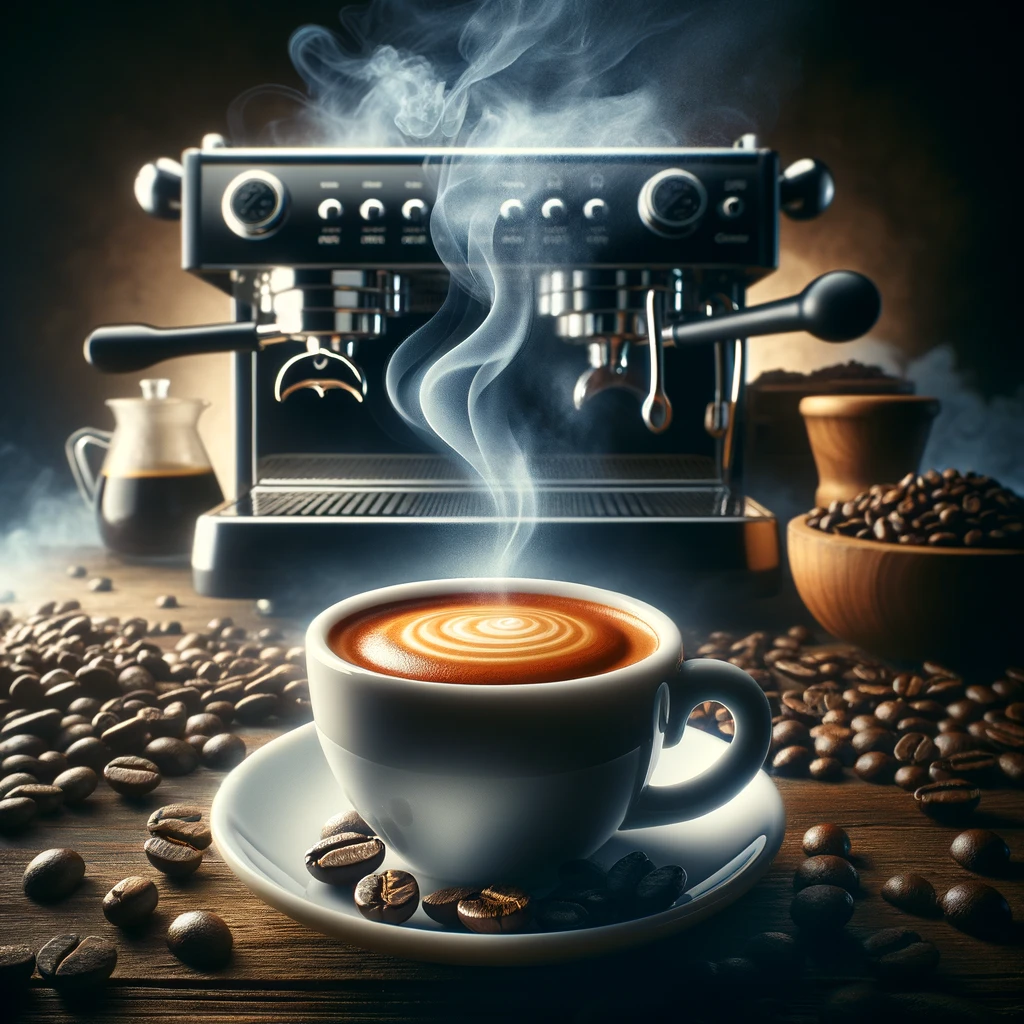This post may contains affiliate links which means I may receive a commission from purchases made through links. Learn more on my affiliate disclaimer.
Part A: Introduction and Basics
Introduction to Pour Over Coffee Ratio
Pour-over coffee has become a beloved method for brewing that perfect cup of joe. But what sets it apart from other brewing methods? Let’s dive in to understand the nuances of pour over coffee ratio and discover how the coffee-to-water ratio plays a pivotal role in this brewing process.
Importance of Pour Over Coffee Ratios
When it comes to brewing coffee, precision is key. One of the fundamental factors that can make or break your pour-over coffee experience is the pour over coffee ratios. This ratio is not just a suggestion; it’s the secret ingredient behind a truly exceptional pour-over brew. To brew a cup that dances with the right balance of flavors and aromas, it’s imperative to get this ratio spot on.
But why is this pour over coffee ratios so important?
The choice of coffee beans and the grind size matter, of course, but the pour over coffee ratio is the conductor of this flavor symphony. It determines the strength, body, and overall taste of your coffee. Too much coffee, and your brew may be overly bitter; too little, and it might taste weak and uninspiring. Achieving the perfect balance is the holy grail of pour-over coffee aficionados.
What is the Pour Over Coffee Ratio?
The pour over coffee ratio is simply the relationship between the amount of coffee grounds and the volume of water used in the brewing process. Typically, this ratio is expressed as the number of grams of coffee per milliliter of water. For example, a common starting point for beginners is a ratio of 1:15, which means 1 gram of coffee for every 15 milliliters of water.
- Finding the right pour over coffee ratio allows you to customize your coffee to your exact taste preferences.
- A higher coffee-to-water ratio produces a stronger and bolder cup of coffee.
- A lower pour over coffee ratio results in a milder and more delicate brew.
To achieve your desired pour over coffee ratio experience, you’ll need to consider factors such as the type of coffee beans, grind size, water temperature, and brewing technique. All these elements interact with the coffee-to-water ratio, making it a crucial factor to master for brewing that perfect cup.
Explore a comprehensive guide to mastering pour-over coffee in our detailed resource on coffee ratios.
Now that we’ve scratched the surface of the pour over coffee ratio, let’s delve deeper into its intricacies and learn how to wield this knowledge to your advantage.
Variations in Pour Over Coffee Ratio
When it comes to the art of pour over coffee ratio, there’s no one-size-fits-all approach. The coffee-to-water ratio isn’t etched in stone; instead, it’s a canvas on which you can paint your coffee masterpiece. Let’s explore the variations in pour over coffee ratio and understand how different coffee beans and personal preferences can shape the brewing experience.
- Coffee Bean Varieties: The type of coffee beans you choose can significantly impact the ideal coffee-to-water ratio. For instance, a bold and dark roast may require a slightly different pour over coffee ratio compared to a light and fruity single-origin bean.
- Roast Levels: Light, medium, or dark roast – each roast level extracts flavors differently. Experimenting with pour over coffee ratio allows you to highlight the unique characteristics of each roast.
- Personal Taste: Your taste buds are unique, and so are your preferences. Some prefer a stronger, more intense coffee, while others enjoy a milder, smoother brew. Finding your perfect pour over coffee ratio is like tailoring your coffee to match your palate.
Benefits of Mastering the Pour Over Coffee Ratio
For coffee enthusiasts, mastering the coffee-to-water ratio is akin to uncovering a hidden treasure chest of flavors and aromas. It’s not just a matter of brewing; it’s an art, a craft, and here’s why it’s so vital:
- Consistency: Achieving the right pour over coffee ratio ensures that each cup of coffee you brew is consistent in taste and quality. No more unpredictable, hit-or-miss brews.
- Flavor Control: By adjusting the ratio, you have precise control over the flavor profile. Whether you want a bright and citrusy brew or a rich and chocolatey one, it all begins with the ratio.
- Cost-Effective: Using the right pour over coffee ratio means you use just the right amount of coffee, avoiding wastage. It’s cost-effective in the long run.
- Impress Your Guests: When you have mastered the art of pour over coffee ratio, you become the coffee connoisseur among your friends and family. Brew them a cup, and they’ll be amazed at your skills.
- Deepen Your Passion: Exploring the intricacies of the pour over coffee ratio deepens your love for coffee. It’s not just a beverage; it’s a journey of discovery.
In the world of pour over coffee ratio, understanding the variations in coffee ratios and appreciating the benefits of mastering them can elevate your coffee game to new heights. So, embrace the diversity of coffee beans, experiment with ratios, and savor the rewards of a perfectly brewed cup of coffee.
Part B: Detailed Exploration
The Golden Ratio
In the world of pour over coffee ratio, there’s a magical number that coffee aficionados swear by – the Golden Ratio. This isn’t just another mathematical concept; it’s the key to unlocking the perfect cup of pour over coffee ratio. Let’s dive into what the Golden Ratio is all about and why it’s a fundamental element in crafting your coffee to perfection.
- What is the Golden Ratio?: The Golden Ratio, often expressed as 1:16, is the ideal coffee-to-water ratio that many experts recommend. It means using 1 gram of coffee for every 16 milliliters of water. This ratio strikes a harmonious balance between strength and flavor, delivering a brew that’s neither too weak nor too overpowering.
- Balancing Act: Think of the Golden Ratio as a tightrope walker’s delicate balance. It ensures that your coffee isn’t under-extracted, resulting in a sour and weak brew, nor over-extracted, leading to bitterness and astringency. Achieving this balance is the essence of pour-over coffee perfection.
Equipment and Tools
To embark on your pour-over coffee journey and achieve that elusive Golden Ratio, you’ll need the right tools and equipment. Here’s a rundown of what you’ll require:
- Pour-Over Coffee Maker: The heart of pour-over brewing is the coffee maker itself. Options range from classic ceramic drippers to trendy glass and metal designs.
- Coffee Grinder: To achieve the perfect grind size, invest in a high-quality burr grinder. It allows you to control the consistency of your coffee grounds.
- Gooseneck Kettle: A gooseneck kettle with a precise pouring spout is essential for controlling the water flow, enabling you to saturate the coffee grounds evenly.
- Coffee Scale: Precision is key, and a coffee scale helps you measure both coffee and water accurately, ensuring you hit the Golden Ratio.
- Quality Coffee Beans: Of course, none of this matters without exceptional coffee beans. Choose your beans wisely, considering their roast level and flavor profile.
- Filters: Depending on your pour-over dripper, you’ll need paper or metal filters. Ensure they fit snugly to prevent grounds from passing through.
- Timer: Timing is crucial in pour-over coffee. A simple kitchen timer can be a game-changer, helping you achieve consistency.
With the right equipment and a clear understanding of the Golden Ratio, you’re well on your way to becoming a pour-over coffee maestro. As you hone your skills and master the art of balancing coffee and water, you’ll discover that crafting the perfect cup of pour-over coffee is as much a science as it is an art. Happy brewing!
Choosing the Right Coffee Beans
When embarking on your pour-over coffee journey, one of the most critical decisions you’ll make is selecting the right coffee beans. The choice of beans isn’t just about flavor; it profoundly influences the coffee-to-water ratio and, ultimately, the quality of your brew.
- Bean Variety: Different coffee bean varieties have distinct flavor profiles. For instance, Arabica beans are known for their nuanced and mild flavors, while Robusta beans have a bolder, more robust taste. Consider how these flavors align with your taste preferences when determining your ideal coffee-to-water ratio.
- Roast Level: The roast level of your beans plays a significant role. Lighter roasts highlight the bean’s origin flavors, while darker roasts offer a more caramelized taste. These roast levels will require adjustments in your coffee-to-water ratio to bring out their best characteristics.
Grind Size Matters
In the world of pour-over coffee, grind size is a silent conductor of flavor. It’s a factor that’s often underestimated but holds the key to achieving the perfect coffee-to-water ratio.
- Extraction Rate: Grind size directly affects the extraction rate during brewing. Finer grinds have more surface area in contact with water, resulting in quicker extraction. Coarser grinds, on the other hand, slow down the extraction process.
- Adjusting Ratio: To maintain the Golden Ratio and achieve your desired flavor, you’ll need to adjust the coffee-to-water ratio based on the grind size. Finer grinds may require slightly more water to balance the flavors, while coarser grinds may need less.
Water Temperature and Quality
The unsung hero of pour-over coffee is water. Its temperature and quality have a profound impact on your brew, and neglecting these factors can throw your coffee-to-water ratio off-kilter.
- Temperature Precision: The water temperature should be between 195°F and 205°F (90°C to 96°C). Too hot or too cold water can lead to uneven extraction and affect your ratio’s effectiveness.
- Water Quality: Coffee is predominantly water, so the quality of your water matters. Filtered or bottled water with balanced mineral content is ideal for brewing. Chlorine or impurities in tap water can taint the flavor.
By ensuring that your water temperature is precise and your water quality is optimal, you set the stage for a balanced and harmonious coffee-to-water ratio that unlocks the full potential of your chosen beans and grind size. These factors, combined with your brewing skills, will lead to a pour-over coffee experience that’s nothing short of exceptional.
Step-by-Step Brewing Process
Brewing a delicious cup of pour-over coffee is an art that requires precision and patience. Let’s walk through the step-by-step pour-over coffee brewing process, highlighting the importance of the coffee-to-water ratio at each crucial stage.
- Prepare Your Equipment: Gather your pour-over dripper, filter, coffee scale, and freshly roasted coffee beans. Ensure everything is clean and ready for use.
- Measure Coffee: Weigh out the desired amount of coffee beans based on your chosen coffee-to-water ratio. Typically, a starting point is a 1:16 ratio (1 gram of coffee to 16 milliliters of water).
- Grind Coffee: Grind the coffee beans to the appropriate consistency. The grind size should match your chosen brewing time and style (e.g., coarse for longer brew times, fine for shorter).
- Pre-Wet Filter: Place the filter in the pour-over dripper and pre-wet it with hot water to remove any paper taste and heat the brewing vessel.
- Bloom: Add a small amount of hot water (about twice the weight of coffee) to saturate the grounds evenly. Allow the coffee to bloom for about 30 seconds. This degassing process prepares the coffee for full extraction.
- Start Pouring: Begin pouring water in a slow, circular motion, starting from the center and moving outward. Maintain a consistent flow rate, ensuring the coffee bed is evenly saturated.
- Maintain Ratio: Throughout the brewing process, keep an eye on the coffee-to-water ratio. Adjust your pour rate if needed to maintain the desired ratio.
- Finish Pouring: Continue pouring until you reach the desired coffee volume. The entire process should take about 2-4 minutes, depending on your grind size and recipe.
- Enjoy: Once the brewing is complete, remove the filter and enjoy your freshly brewed pour-over coffee.
Experimentation and Adjustments
While mastering the pour-over coffee process involves precision, it also offers room for creativity and personalization. Encourage readers to experiment with coffee ratios to discover their preferred taste. Here are some tips:
- Adjusting the Ratio: Try different coffee-to-water ratios to see how they affect the flavor. Start with the Golden Ratio (1:16) and then tweak it to find your sweet spot.
- Grind Size Experimentation: Changing the grind size can lead to unique flavor profiles. Experiment with finer and coarser grinds to explore new dimensions of taste.
- Water Temperature: Test how small variations in water temperature impact the brew. A few degrees can make a big difference.
- Brewing Time: Adjust the brewing time by altering your pour rate. Longer brew times can extract more flavor, while shorter times result in a lighter cup.
Common Mistakes and How to Avoid Them
Even with the best intentions, mistakes can happen during pour-over brewing. Highlight common errors and provide solutions to help readers perfect their technique. Some frequent mistakes include:
- Inconsistent Pour: Pouring water too quickly or unevenly can result in an imbalanced brew. Encourage a controlled, steady pour.
- Wrong Grind Size: Using the wrong grind size can lead to over-extraction or under-extraction. Recommend adjusting the grind size based on your chosen ratio.
- Neglecting the Bloom: Skipping the blooming step can cause uneven extraction. Stress the importance of degassing the coffee for better results.
- Overlooking Water Quality: Poor-quality water can negatively impact the taste. Remind readers to use filtered or bottled water for the best results.
By addressing these common mistakes and encouraging experimentation, readers can hone their pour-over coffee skills and discover their perfect brew. Pour-over coffee is not just about following a recipe; it’s about creating a customized cup of coffee that satisfies your unique taste preferences.
Part C: FAQ Section
Frequently Asked Questions (FAQ)
As you dive into the world of pour-over coffee, you’re bound to have questions about the coffee-to-water ratio and the brewing process. To help you navigate this exciting journey, here are answers to some of the most frequently asked questions about pour-over coffee.
What is the ideal pour-over coffee ratio?
The ideal pour-over coffee ratio is often expressed as the Golden Ratio, which is 1:16 (1 gram of coffee to 16 milliliters of water). However, the “ideal” ratio can vary based on your personal taste preferences and the type of coffee beans you use. It’s a starting point, but don’t hesitate to adjust it to suit your palate.
How does the coffee-to-water ratio affect the taste of coffee?
The coffee-to-water ratio is like the conductor of an orchestra, determining the balance of flavors and strength in your brew. A higher ratio results in a stronger coffee with bolder flavors, while a lower ratio produces a milder, smoother cup. It plays a crucial role in achieving the desired taste and aroma in your coffee.
Can I use different ratios for different coffee beans?
Absolutely! Different coffee beans have unique flavor profiles. Experimenting with various ratios is a great way to highlight the distinct qualities of each coffee. Lighter roasts may benefit from a slightly higher ratio, while darker roasts might require a slightly lower one. It’s all about finding the right balance for your chosen beans.
What grind size is best for pour-over coffee?
The grind size for pour-over coffee depends on your brewing method. Generally, a medium grind is a safe bet for most pour-over drippers. However, you can fine-tune the grind size based on your preferences. Coarser grinds work well for longer brew times, while finer grinds are suitable for shorter brews.
Why is water temperature crucial in pour-over coffee?
Water temperature is crucial because it affects the rate of extraction and the overall flavor of your brew. The recommended range is between 195°F and 205°F (90°C to 96°C). Water that’s too hot can result in bitterness, while water that’s too cold can lead to under-extraction and a weak brew. Maintaining the right temperature ensures you unlock the full potential of your coffee beans.
These frequently asked questions and answers should help you navigate the world of pour-over coffee with confidence. Remember that while there are guidelines, pour-over brewing is also about personalization. Feel free to experiment and make adjustments to your coffee-to-water ratio to discover your perfect cup of pour-over coffee.





